Rich reports from the Madre de Dios region of Peru.
The rainforest lodges of Madre de Dios were an abrupt but delightful change of pace from the first Peru tour, where we had been mostly in mountains of the neighboring department of Cusco. For one, it was warm and humid, though on two days we were under the influence of a late cold front, when the overcast skies and cooler temperatures were quite welcome.
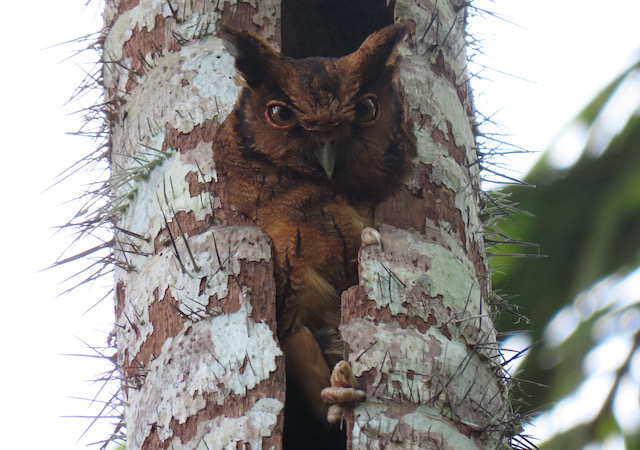
We walked every day, piling on the miles, but one of the most enjoyable aspects of this tour is being able to bird right outside our rooms. It was right there when we heard a ruckus from inside a dead, hollowed-out palm trunk, and we looked up to see this Tawny-bellied Screech-Owl indignantly poking its head out of the top.
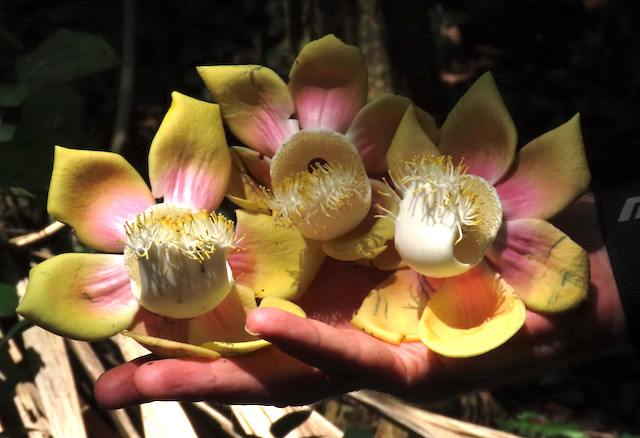
Another treat was walking the same trails on multiple days – and discovering how different they can be from one day to the next. On our first pass by a large tree dropping red fruits to the ground, a group of Pale-winged Trumpeters approached and put on quite a show. The next time we passed there, a stunning Plum-throated Cotinga sat just under the canopy for extended views. And on a third visit we flushed a Ruddy Quail-Dove off its nest with two eggs, right next to a stunning cannonball tree (Couroupita guianensis) that was dropping its flowers all around the tree.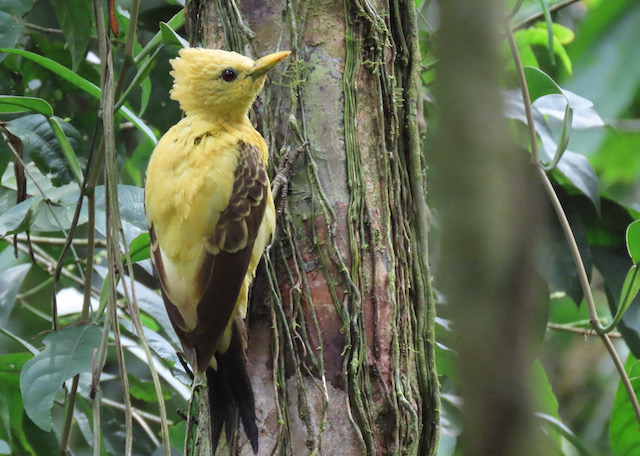
And yet on another pass on the same trail, this female Cream-colored Woodpecker perched at eye-level very close to the trail and sat there for an extended time, seemingly unafraid of our presence.
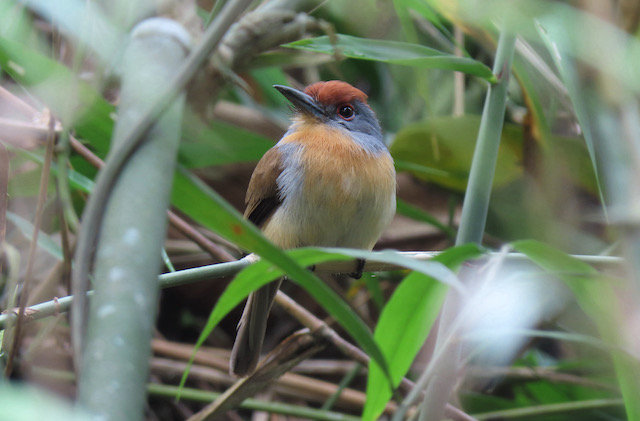
We birded one of the closer trails to the lodge several times in search of its bamboo specialties, and we were surprised on one morning by a pair of very quiet Rufous-capped Nunlets low in the vegetation right off the trail.
Then again there were some reliable birds, such as the lek of Band-tailed Manakins which showed well when we stood still near their favorite display area, and on our second stop they were even more cooperative. Or the pair of Great Jacamars that we found along the same stretch of one trail on several days. We suspected they might have had a nest nearby.
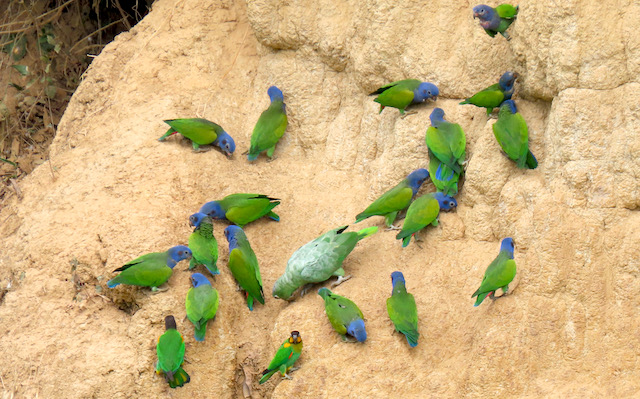
Two surprises at Los Amigos were a rare Brown-banded Puffbird that flew in quietly while we were scanning the canopy for a singing Western Striolated-Puffbird (which we ended up seeing on another day). Another was the scarce and very unpredictable Amazonian Parrotlet, which if found is usually just a quick-flying flock through the canopy. This year we saw pairs and multiple small flocks on five days, perched in trees and feeding right over the trails, offering great views of this bird that Don Stap wrote about in his popular book A Parrot Without a Name.
The last days of birding at Tambo Blanquillo were a nice change of pace, starting with a long boat ride on the Madre de Dios river. We spent most of a morning at the famous clay lick. It was a thrill to see a flock of about a hundred Red-and-green Macaws take off in a deafening flight. They never did come down to feed on the dirt, but many other species did, including this collection of Blue-headed, Orange-cheeked, and Mealy parrots.
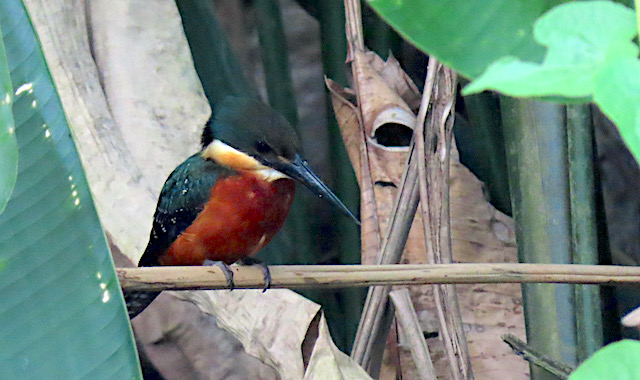
We had a delightful paddle around one of the oxbow lakes, where Pale-eyed Blackbird, dozens of Hoatzins, Greater Anis, Sungrebe, and many other species presented themselves. A favorite bird of the tour and a very lucky find was this lone Green-and-rufous Kingfisher, perched typically in the deep shade of the overhanging vegetation.
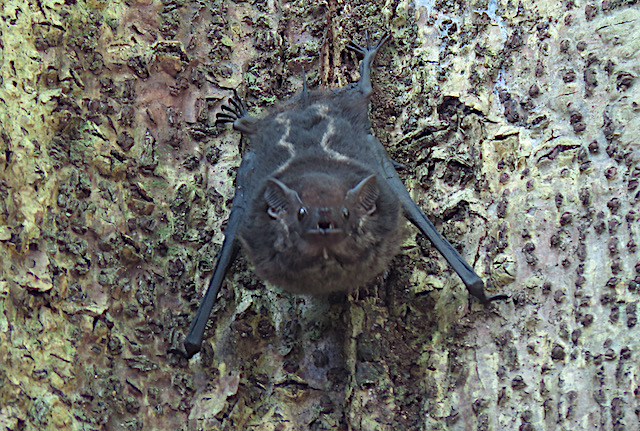
We also saw a fantastic variety of butterflies and other insects, frogs, and mammals, including nine species of monkey, many in abundance. Along one trail we looked up into a tree cavity only to see this sac-winged bat scramble out and perch in plain sight on the trunk.
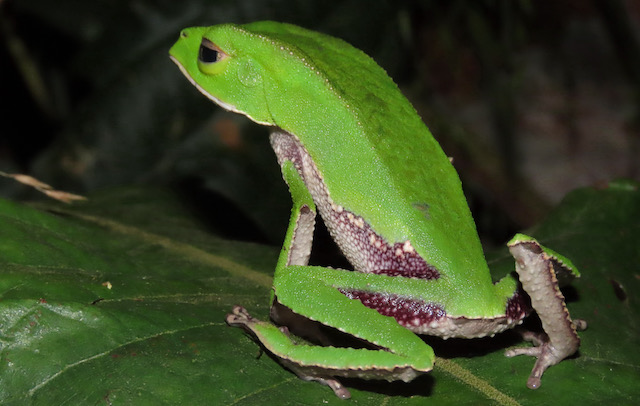
The station science coordinator at Los Amigos was very generous with his time, and he showed us this White-lined Leaf Frog that had been roosting on the same leaf for a few days right by the office; here it is in the evening setting off to forage.
The tour ended with an impressive total of about 375 species of birds. And though no one took part in both tours, the total 20-day total came to about 650 species.